At ‘diamond in the rough’ at Whittier Narrows, army of volunteers cleans up nature sanctuary
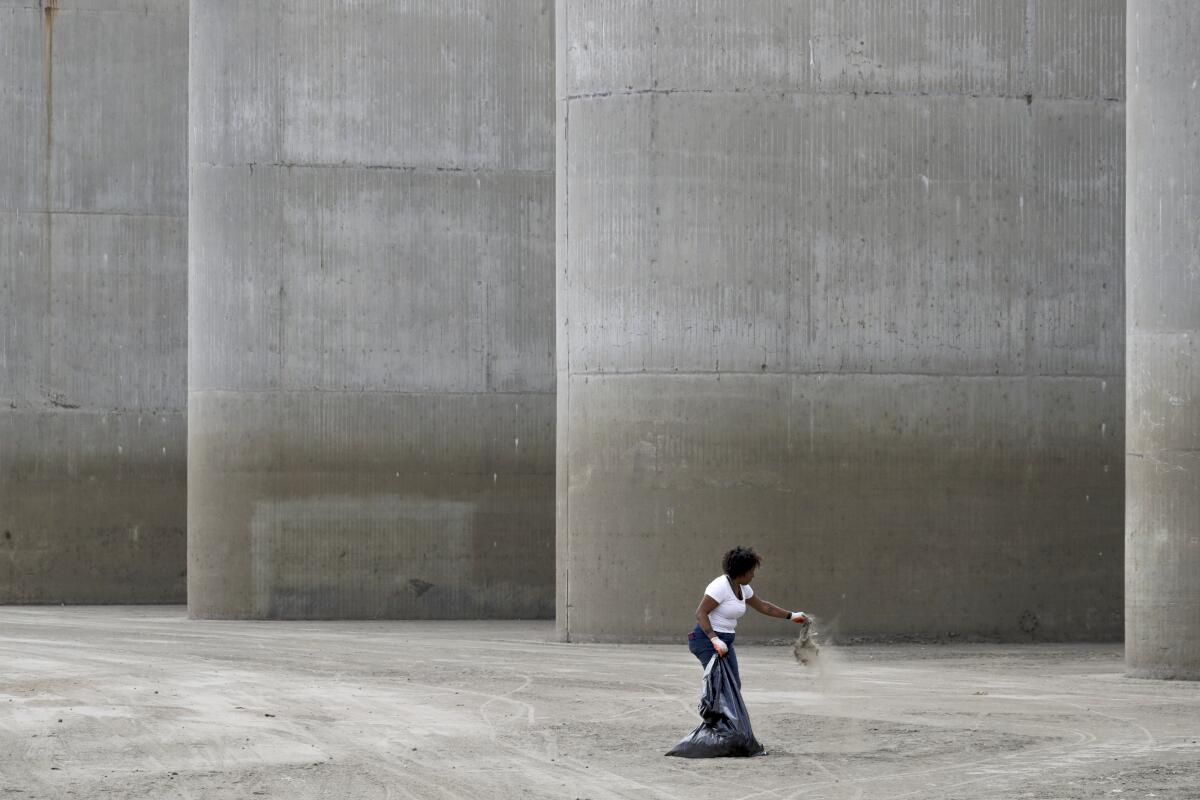
- Share via
More than 100 volunteers fanned out across the San Gabriel Riverbed at Whittier Narrows nature sanctuary under gloomy gray skies on Saturday to pick it clean of trash buried in sand and snared in the limbs of willow trees and weeds.
Their quarry included shoes, shredded clothing, shopping carts, tires, plastic bottles and an occasional infant car seat.
And the litter kept coming at the 419-acre nature preserve flanked by two freeways and a string of industrial parks in eastern L.A. County: baseballs, water hoses, blankets, televisions and tent poles. Beer bottles, metal scraps, orange traffic cones and suitcases.
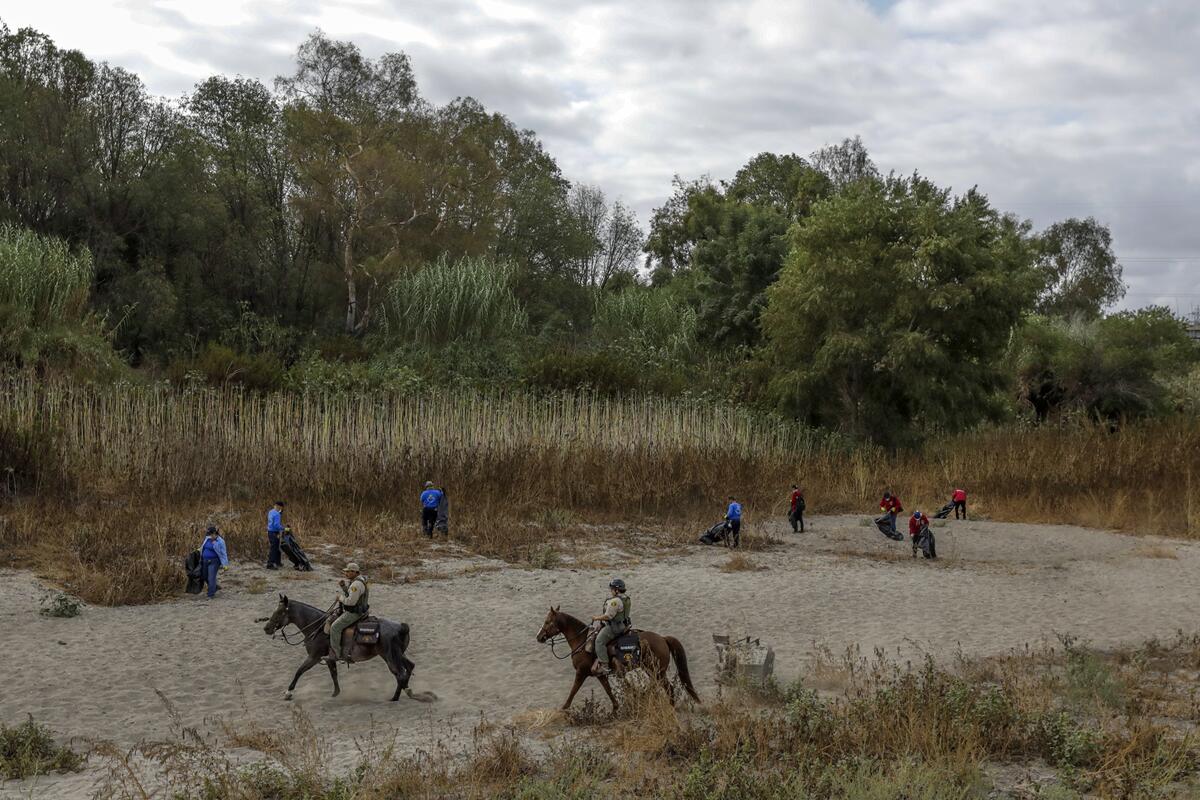
The event held in honor of National Public Lands Day, one of the largest single-day volunteer restoration activities in the nation, was overseen by a new team of four U.S. Army Corps of Engineers park rangers created to establish closer ties between the agency’s L.A. District and communities adjacent to open space and habitat surrounding its flood control projects.
“We hope this event will allow us to introduce ourselves to the community,” Ranger Nicolas Figueroa said, “and let them know we are here to serve. We value the community’s input and their dedication to using recreational lands.”
Charlie Valdez, president of the nonprofit Whittier Narrows Nature Center Associates, said it may take some time to get used to Army Corps officials on a mission to support local efforts to protect habitat, lead nature hikes and participate in educational programs.
“Before today, we rarely communicated with the Army Corps, which seemed to be just fine with them,” he said. “So, this is a brand-new day for all of us. I have my hopes that it will last.”
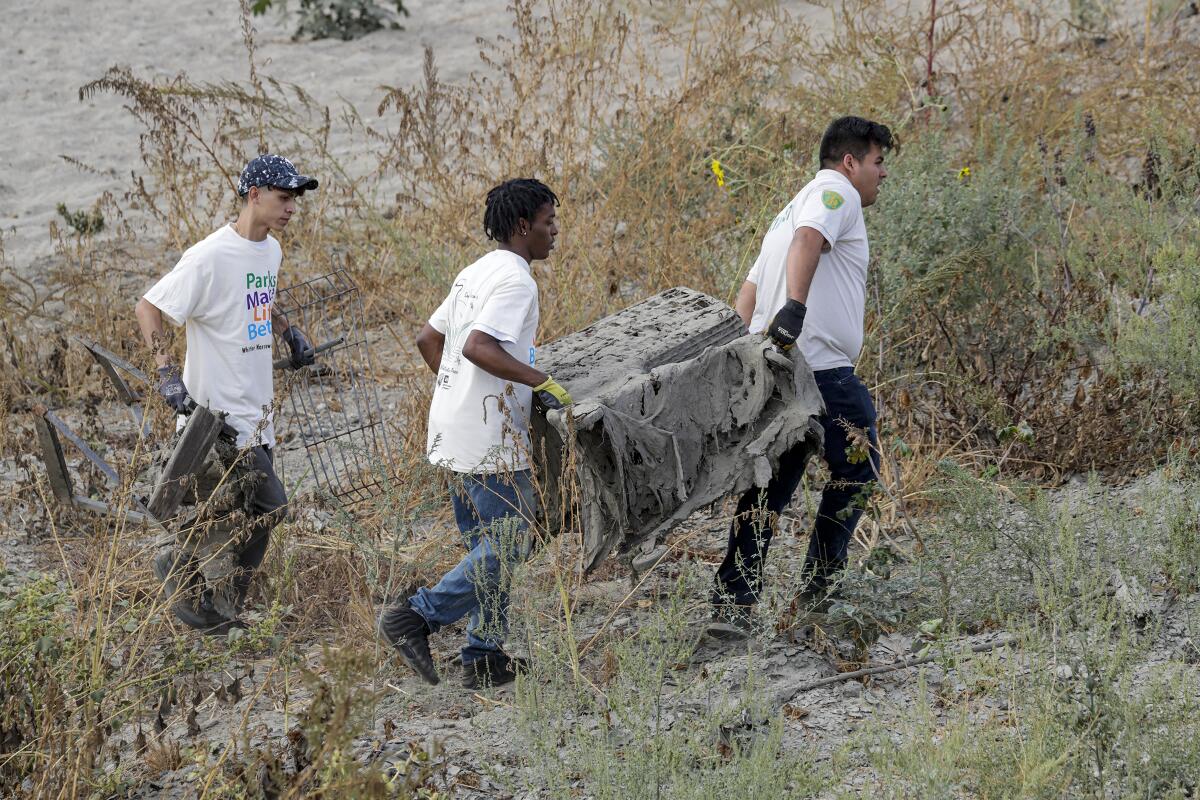
The river’s flow, which originates in the San Gabriel Mountains, was stopped at upstream dams before the volunteers arrived at daybreak. As they descended into the river bed sands marked with the paw prints of raccoons, coyotes and rabbits, the air resounded with the clatter and clang of their cleanup.
A colony of bright red cardinals — imported from the East Coast and turned loose generations ago by their owner — resides in the dense brush.
Among the volunteers was Tom Moritz, 64, an adjunct professor of environmental studies at the private University of the West in Rosemead. Hoisting a garbage bag bulging with trash, he echoed the sentiments of many participants: “It’s really important that the Army Corps gets onboard environmental restoration work on this gorgeous federal property that is home to loads of endangered species.”
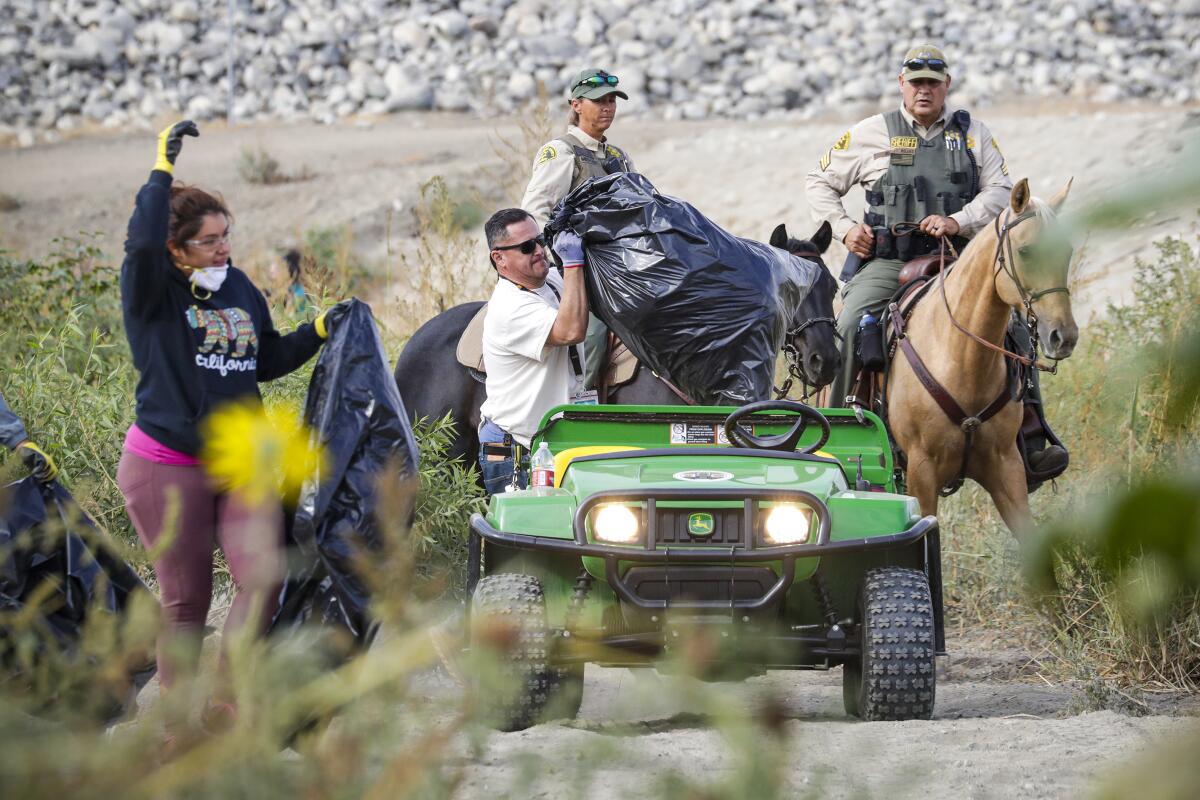
Nearby, Linda Osborn, 62, who has patrolled the sanctuary on horseback for 25 years as a member of the Los Angeles County Mounted Assistance Unit, could not agree more.
Reaching out with her hands to embrace the riverbed lined with the red, orange and auburn of sycamores, oaks and alders, she said, “Whittier Narrows is a diamond in the rough — it’s L.A. County’s Central Park.”
She paused for a few seconds before adding, “But the homeless camps that suddenly appeared in the dense groves and vines about 10 years ago have been a real eye-opener.”
The sanctuary was founded in 1939 by the Audubon Society. The corps built the spillway and 56-foot-tall earthen dam in 1957 to control flooding and recharge a critically needed groundwater basin along the occasionally tempestuous San Gabriel and Rio Hondo rivers.
The San Gabriel River ranks among the steepest rivers in the U.S., plunging 9,900 feet from boulder-strewn forks in the mountains down to Irwindale. It then meanders in a gravelly channel before arriving at lush Whittier Narrows — a natural gap in the hills that form the southern boundary of the San Gabriel Valley. From there, its flows are tamed in a concrete-covered channel for most of its final journey to the Pacific Ocean.
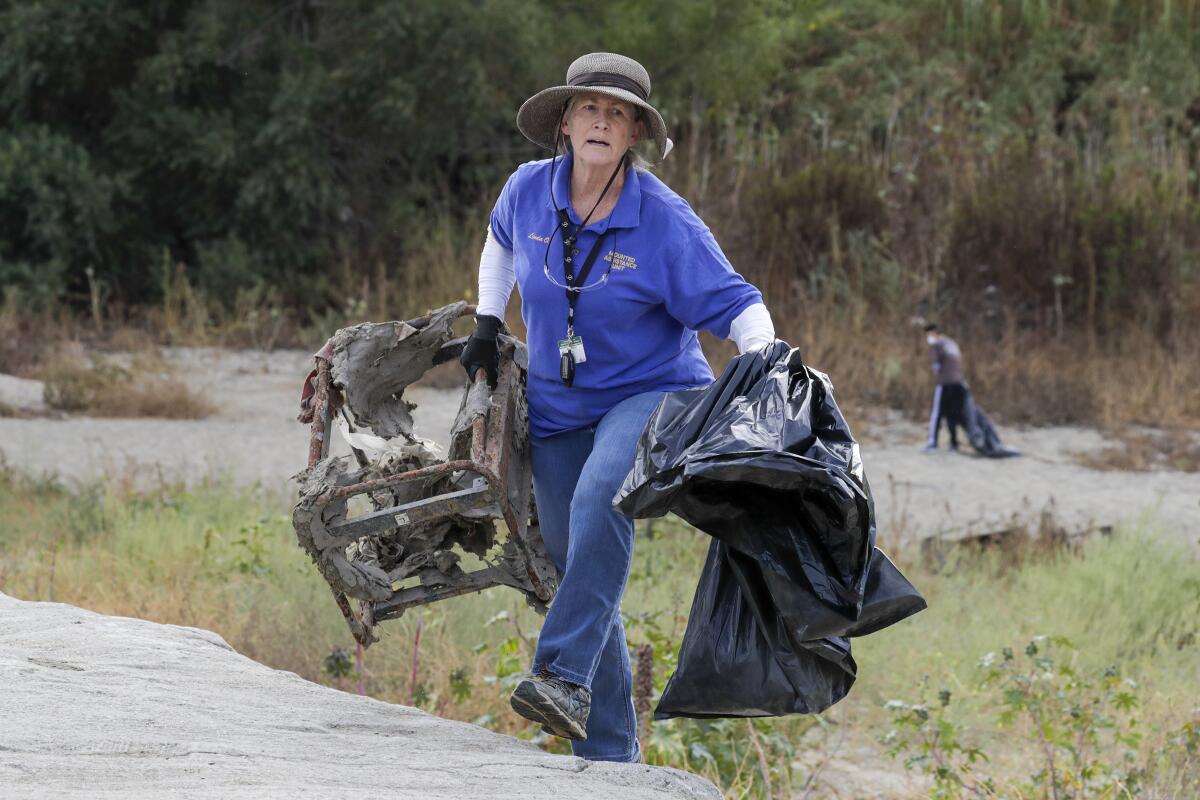
Concerns about flood risk have prompted local officials and federal lawmakers led by U.S. Rep. Grace F. Napolitano (D-Norwalk) to urge the corps to expedite needed safety repairs at Whittier Narrows Dam, about 13 miles southeast of Los Angeles.
The corps recently found that the dam would fail if water were to flow over its crest or if seepage eroded the sandy soil underneath. In addition, unusually heavy rains could trigger a premature opening of the dam’s massive spillway, releasing more than 20 times what the downstream channel could safely contain within its channels.
The corps used computer models to estimate the effects of 900-, 7,500- and 18,000-year storm events. In each case, catastrophic flooding could hit 25 cities downstream with water as much as 20 feet deep.
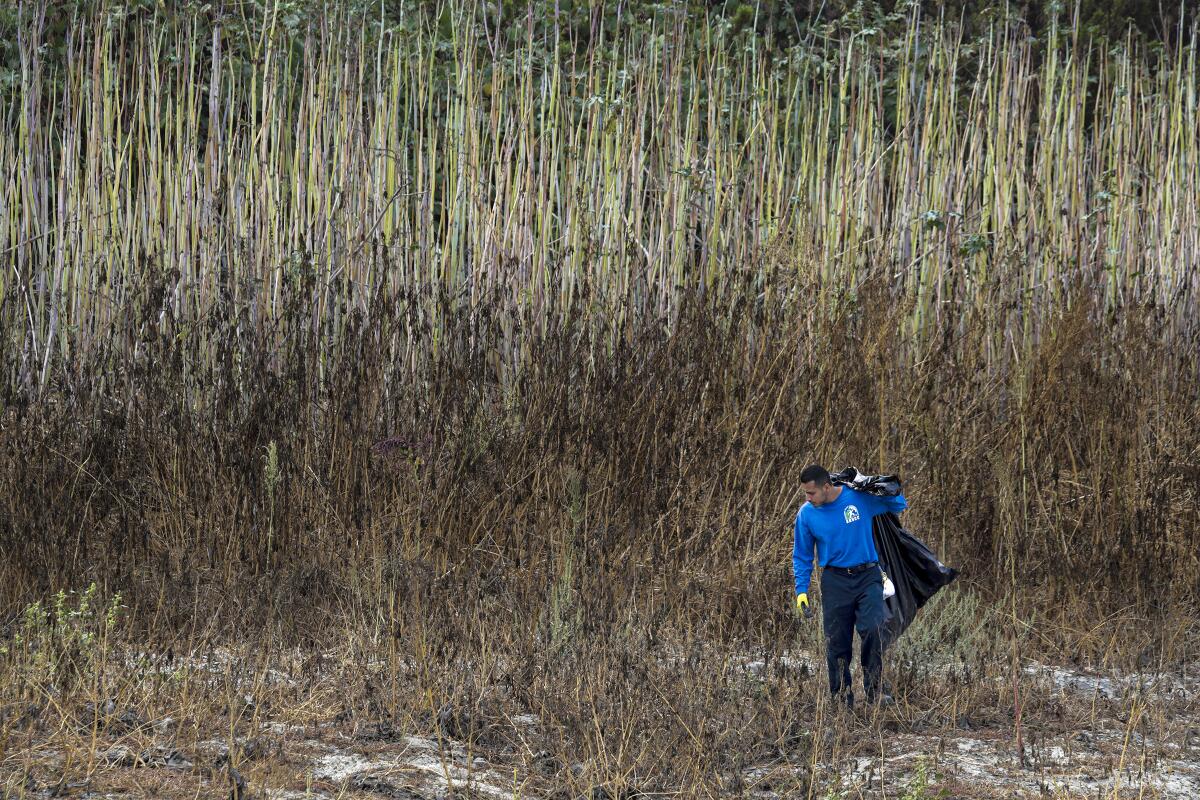
The corps estimates that its repair project at the dam could cost up to $600 million and be completed by 2026.
By 2 p.m., volunteers from groups including the San Gabriel Valley Conservation Corps were marveling as much about the natural beauty of the landscape as about what they had hauled out of it: 6,500 pounds of garbage including nine tires and eight shopping carts.
As for the Army Corps rangers’ vow to work with the local community, Figueroa said, “This commitment is from here on out. We’re not going away.”
More to Read
Sign up for Essential California
The most important California stories and recommendations in your inbox every morning.
You may occasionally receive promotional content from the Los Angeles Times.










